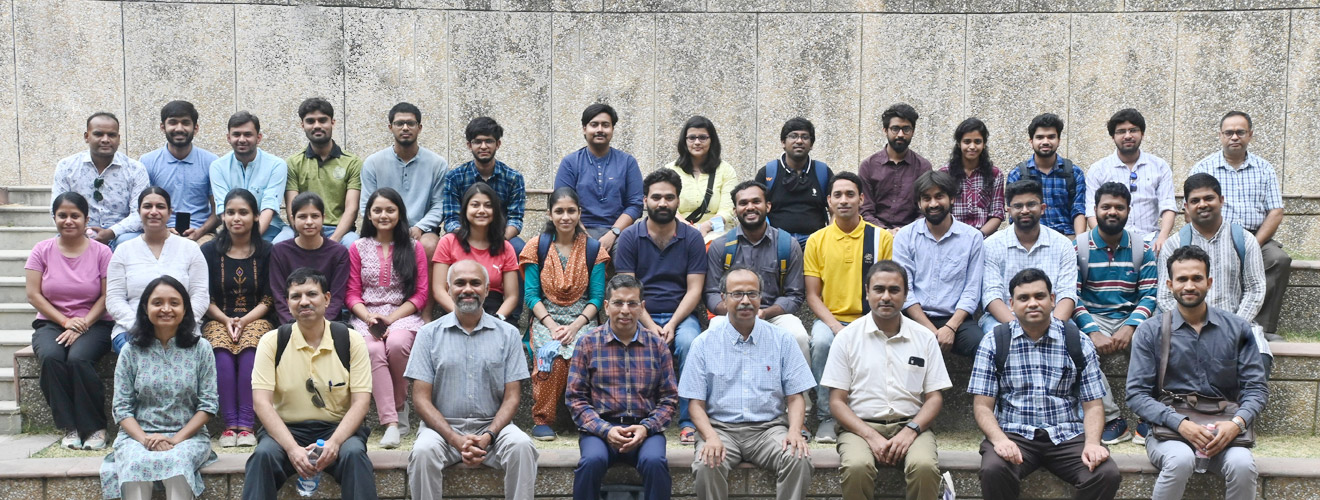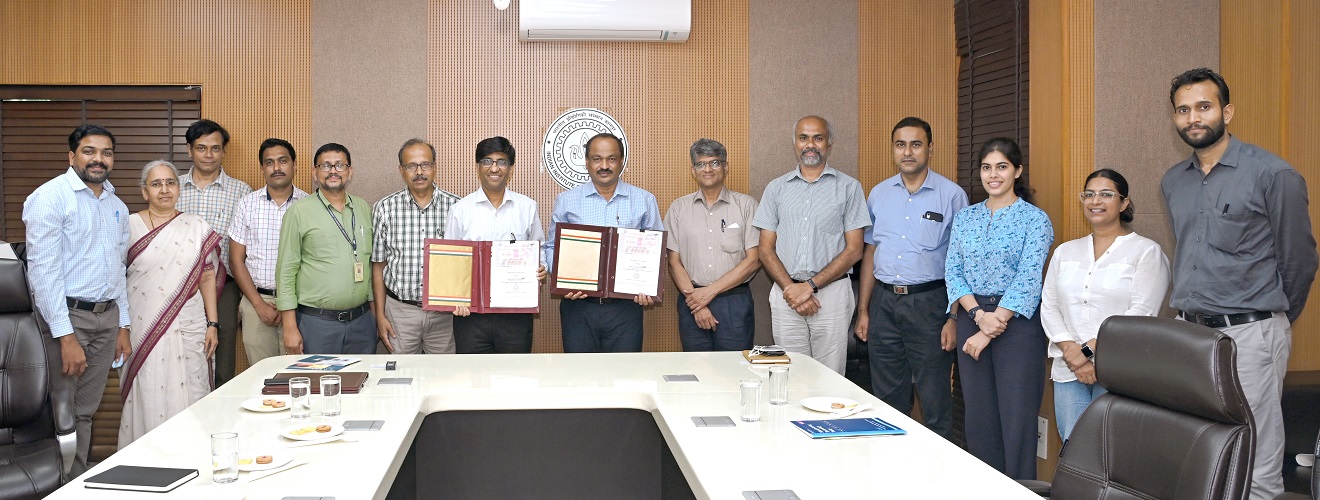About Us
The Center for Lasers and Photonics (CELP) is an interdisciplinary center of excellence that combines cutting-edge technology from engineering and theoretical advances in science to create new horizons in the field of photonics science and engineering. The faculty in CELP belong to six different parent departments (EE, ME, AE, PHY, CY, and CE) and pursue research in the fields of nanobiophotonics, ultrafast optics, quantum optics and related fields. The Center has research infrastructure worth several crores funded by agencies such as DST, DRDO, CSIR, MHRD etc.
Head of Department
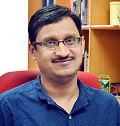
Prof. Pradeep Kumar K
Head, Centre for Lasers and Photonics
Phone:0512-259-7570
Email: head_ltp@iitk.ac.in / pradeepk@iitk.ac.in
| Name | Duration |
|---|---|
| Prof. A S Parasnis | August 1983 to February 1988 |
| Prof. K K Sharma | March 1988 to April 1991 |
| Prof. R K Theraja | May 1991 to December 1994 |
| Prof. A K Ghosh | January 1995 to March 1998 |
| Prof. R C Sharma | April 1998 to April 2001 |
| Prof. Joseph John | May 2001 to April 2004 |
| Prof. Utpal Das | May 2004 to April 2010 |
| Prof. Pradipta Kumar Panigrahi | May 2010 to December 2013 |
| Prof. Asima Pradhan | January 2014 to January 2017 |
| Prof. R Vijaya | February 2017 to June 2018 |
| Prof. Harshwardhan Wanare | July 2018 to August 2021 |
| Prof. Pradipta Kumar Panigrahi | September 2021 to August 2023 |
| Prof. Pradeep Kumar K | September 2023 - |
 Prof. Asima Pradhan, Professor
Prof. Asima Pradhan, Professor
City University of New York, USA
This email address is being protected from spambots. You need JavaScript enabled to view it.
+91-512-59 7691
Home Page
 Prof. Utpal Das, Professor
Prof. Utpal Das, Professor
University of Michigan, USA
This email address is being protected from spambots. You need JavaScript enabled to view it.
+91-512-2597150/2597409
Home Page
- Ph.D. Admissions: Walk-in Interviews/ hybrid mode (2024-2025-I Semester)
- Selected candidates for admission to the Ph.D Program
- Selected candidates for admission to the M.S (By Research)
- Candidates Shortlisted for Interview in PhD Programme
- Candidates Shortlisted for Interview in M.S (By Research) Programme
- PG Admissions 2024-25 1st Semester interview date
- Candidate selected for Ph.D programme 2023-2024
- Candidate selected for M.Tech programme 2023-2024
- Candidate selected for M.S(By Research) programme 2023-2024
- Nitish Kumar Gupta selected for Outstanding PhD Thesis Award (2023) from PSE
- List of candidates are selected for admission to the Ph.D
- List of candidates are selected for admission to the M.S ( By Research)
- List of candidates shortlisted for interview in M.S. By Research (MSR) programme
- List of candidates shortlisted for interview in PhD programme
- PG Admissions 2022-23 2nd Semester
Some of the prominent contributions to technology development by CELP faculty are listed below:
- EPI Pressure sensors
- Cervical cancer detection
- Fiber optic devices
- Enhanced light collection in solar cell using patterned surface
- Cavity-coupled guided resonances in photonic crystal heterostructures
- Dynamical bistability through loss modulation in fiber laser
- Measuring temporal coherence of broadband laser
- Characterizing silicon photonic crystal slab with out-of-plane light coupling
- Generation of ultraviolet light using standard single mode fiber
- Stokes-Mueller study of polarized light in photonic crystal
- Metasurface-based triple-band antenna
- Imaging of inhomogeneities within highly scattering media
- Phototherapy units for treatment of Neonatal Jaundice using dual wavelength exposure
- Vein visualization aid for intravenous interventions
- Optical real-time label free detection of Bilirubin levels in Neonates
- UV sterilization chamber using the ideas of chaos in Bunimovich stadium geometry for uniform distribution of radiation
- Computational fluorescence optical and photoacoustic tomography and Electrical impedance tomography: Data acquisition system and reconstruction algorithms.
- Large-bandwidth chaos in optical fibers: Demonstrated chaos of 12.5 GHz single-sided bandwidth in erbium-doped fiber laser. This is the largest bandwidth of chaos reported till date in fiber-lasers.
- High-speed random number generator: Using chaos in erbium-doped fiber ring lasers, demonstrated random number generator with potential generation rate of 400 Gbps/single-mode of polarization. Patent granted
- Trench-Assisted Fiber for FTTH Applications: Developed a novel fiber with refractive index profile that is insensitive to bend induced losses. Patent granted. Presently exploring options for technology transfer.
- Developed Quantum Key Distribution hardware including single-photon detector module at 1550 nm, 2.4 GHz RF transmitter and receivers, and OFDM based QKD systems.
- High speed and robust fringe analysis method for interferogram processing
- Non-invasive multi-component precision metrology instrument
- Non-contact nanoscale surface topography instrument
- A thin film based flat optical device for beam shaping
- A reconstructive spectrometer
- Greater than 100Gbps Highly Efficient Waveguide Photodiodes Monolithically Integrated with waveguide taper for Optical Fiber coupling at 1550 nm wavelength

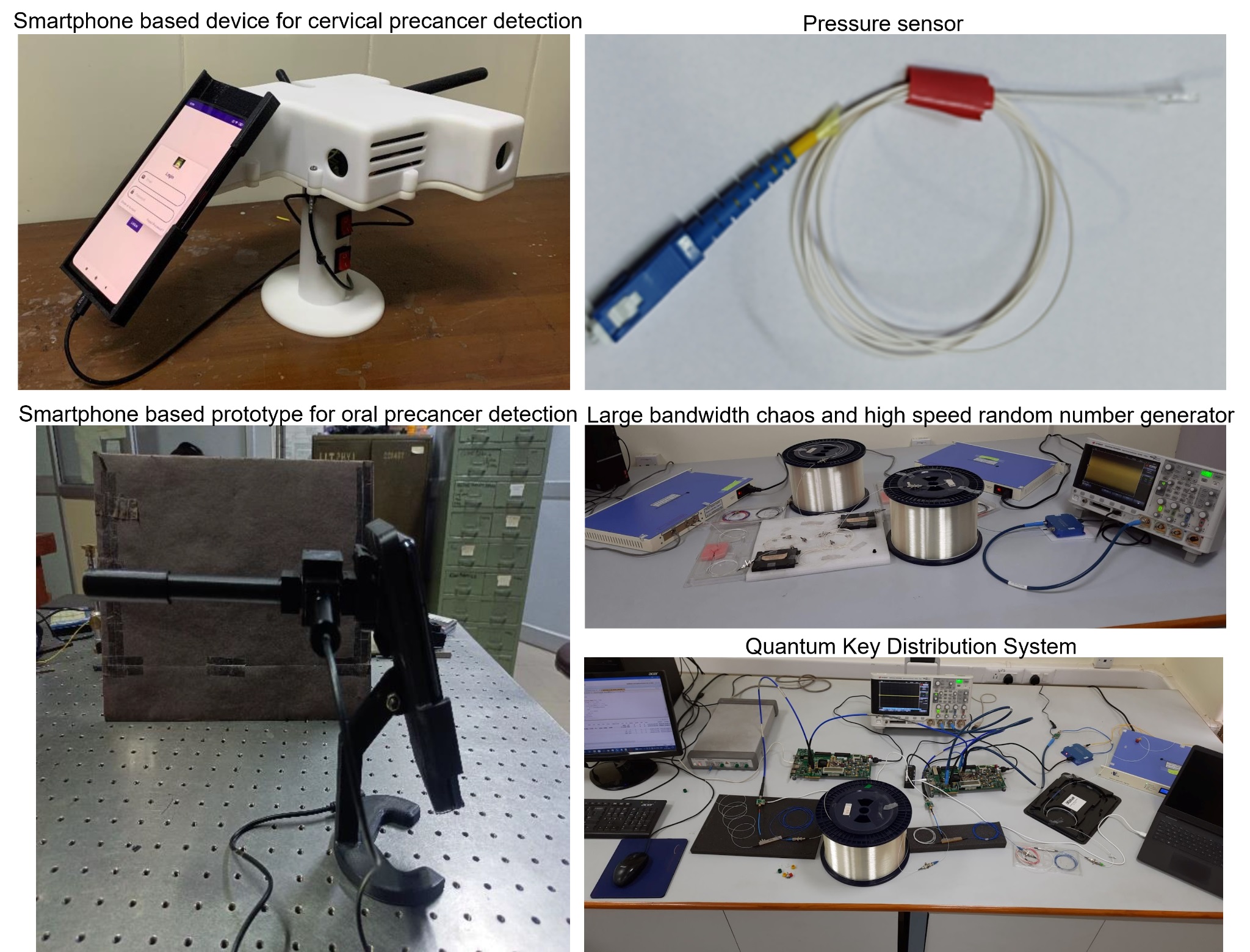
- Pulsed Nd: YAG Laser (Quanta Ray Pro-Series)
The Quanta-Ray Pro-Series pulsed Nd: YAG laser comprises a laser head with Beam Lock and power supply. Control is provided via windows-based software or an optical table top analog controller. This laser offers a variety of pulse frequency and wavelength options.
Specifications:
Laser wavelengths: 1064 nm and 532 nm; Rep rate: 10 Hz; Pulse width: 10 nsec; Energy (@1064nm): 325 mJ/pulse; Energy (@532nm): 120 mJ/pulse; Beam diameter: < 10mm;
Activities: Optical waveguide characterization (Departmental)
Optofluidic dye laser characterization (Departmental)
Synthesis of carbon nano-tubes (External)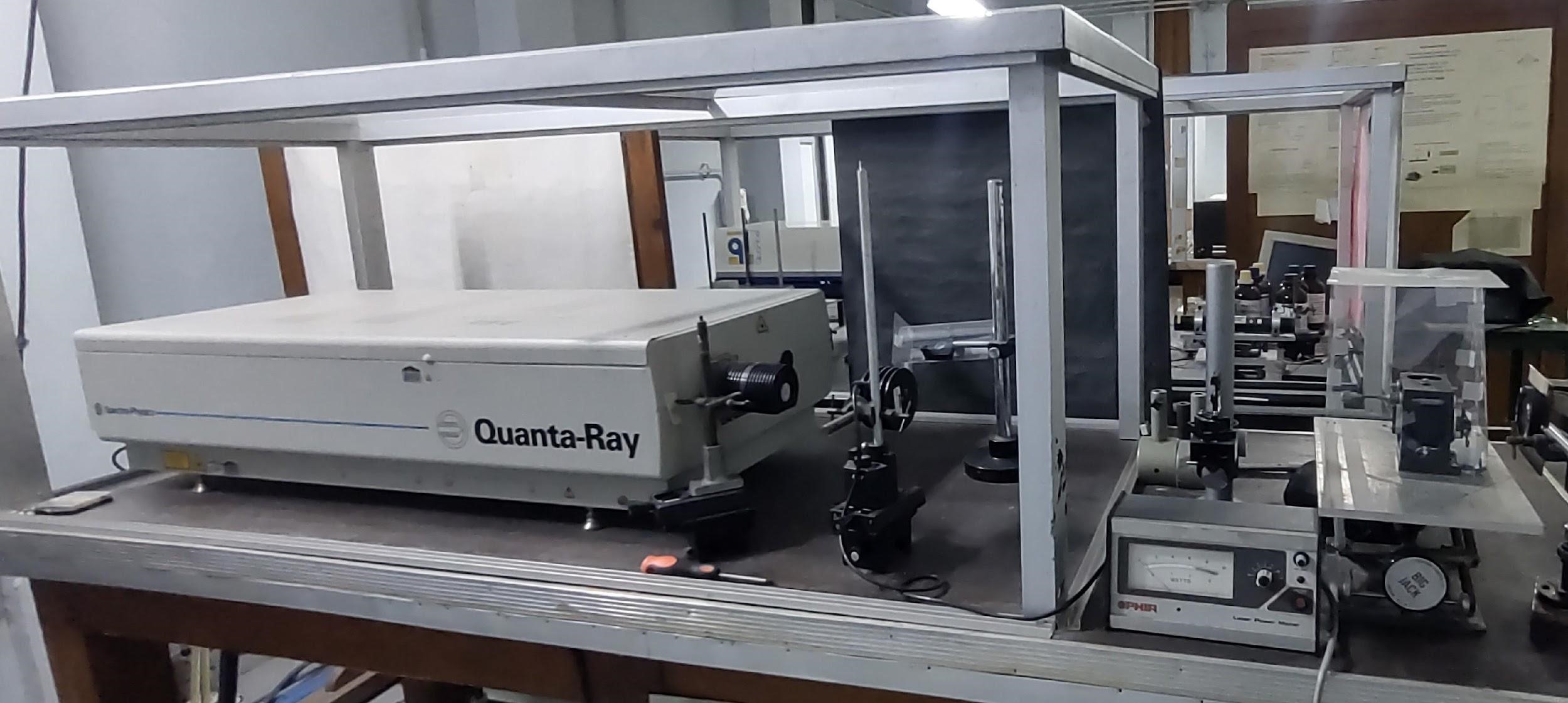
- Pulsed Nd: YAG Laser (Quanta Ray INDI)
Quanta-Ray INDI series laser is designed for users who do not require a high end pulsed Nd: YAG laser. The system comprises following components:- Laser head
- Power supply unit
- Table top controller
- CIM-INDI computer interface
- Push button switch option for single shot operation
Specifications: Model: INDI 40; Rep-rate: 10 Hz; Energy (@1064nm): 450 mJ; Energy (@532nm): 200 mJ
Energy (@355 nm): 100 mJ; Energy (@266nm): 55 mJ; Pulse Width: 5-8 nsec; Divergence: 0.5 mrad;
Beam Diameter: <10mm; Energy stability: 2%;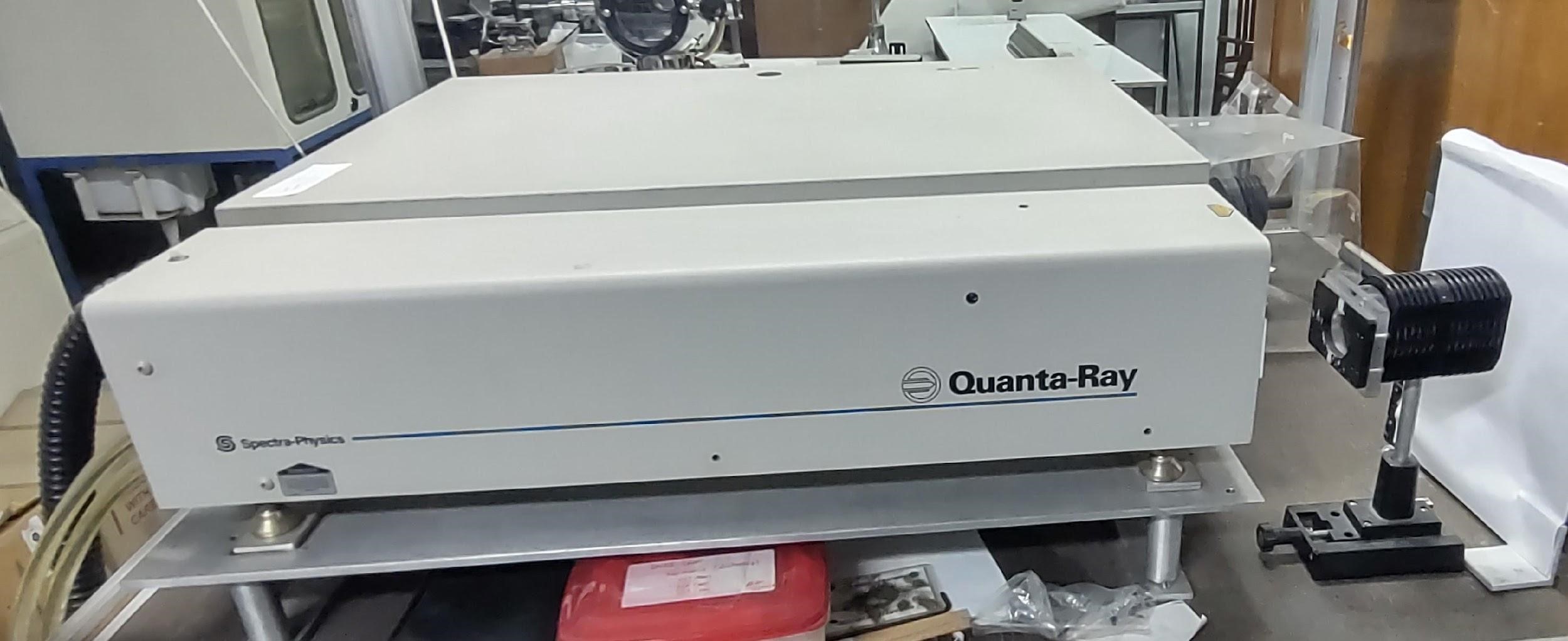
- Mode-locked Nd: YAG laser (QUANTEL YG900)
The QUANTEL YG 980 series combines an Nd: YAG oscillator with up to two amplifiers, and features up to 2.5 J of pulse energy, excellent beam quality and high stability.
Specifications:
Temperature stabilized bench, Fast photodiode for pulse visualization, Automatic harmonic selection Linewidth: 0.003 cm-1 with SLM option, Temperature controlled harmonic generators with motorized tuning provide the user wavelength modularity. Narrow linewidth options, including Single Longitudinal Mode (SLM) operation, as well as higher repetition rates are available to meet application requirements.
Principal radiations: 1064nm, 532 nm, and 355 nm
Max Energy per pulse: 420mJ (1064nm); 80mJ (532nm); 30mJ (355nm)
Pulse width: 35 psec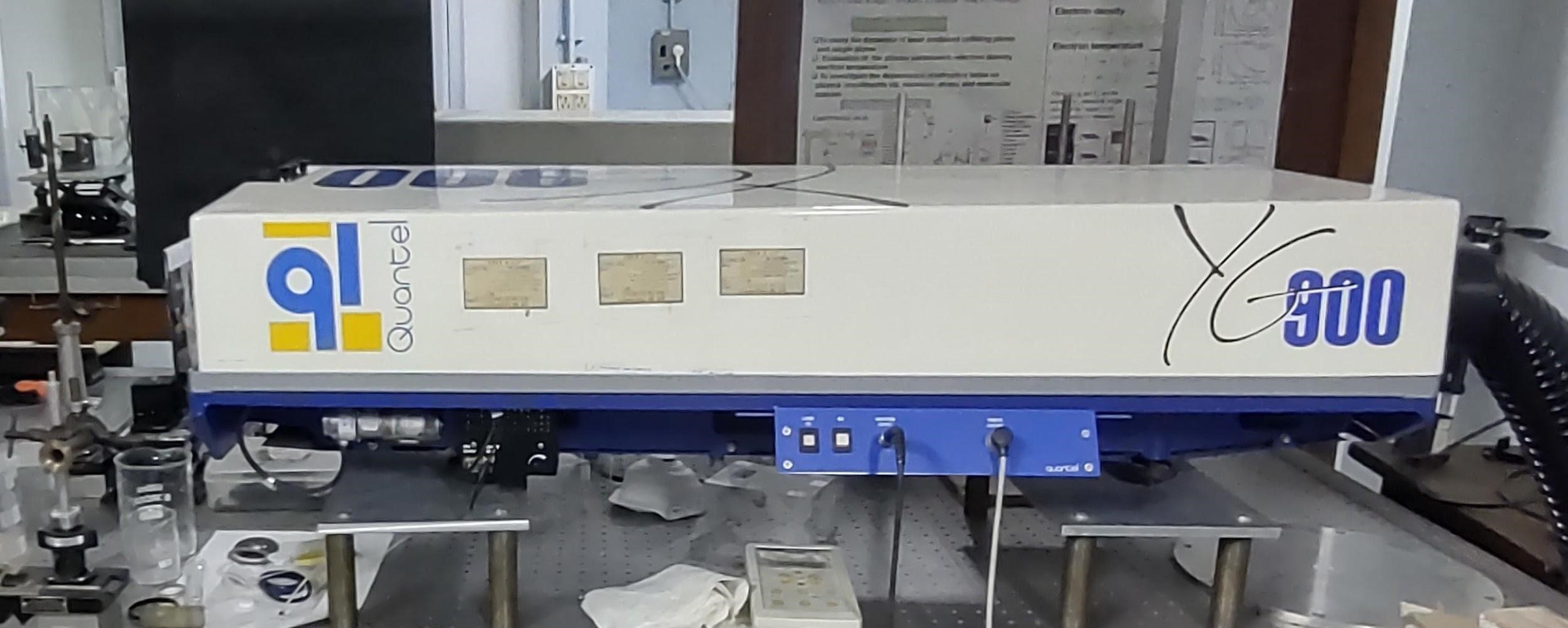
- Laser ablation chamber with turbo molecular vacuum pump
Specifications:
Laser ablation chamber:
Material: SS 304, ID: 350mm
Height: 300mm; thickness: 3mm;
No of ports available suitable for many experimentsTurbo Pump:
Make: Pfeiffer Vacuum GMBH Turbo Cube Model 521
Connection dia: DN160 CF-F; Pumping speed for N2: 5000lps;
Backing Pump: DUO 5 (Pumping speed: 5 m3/h);
Splinter ShieldDN 160;
Compact Full Range Gauge model PKR251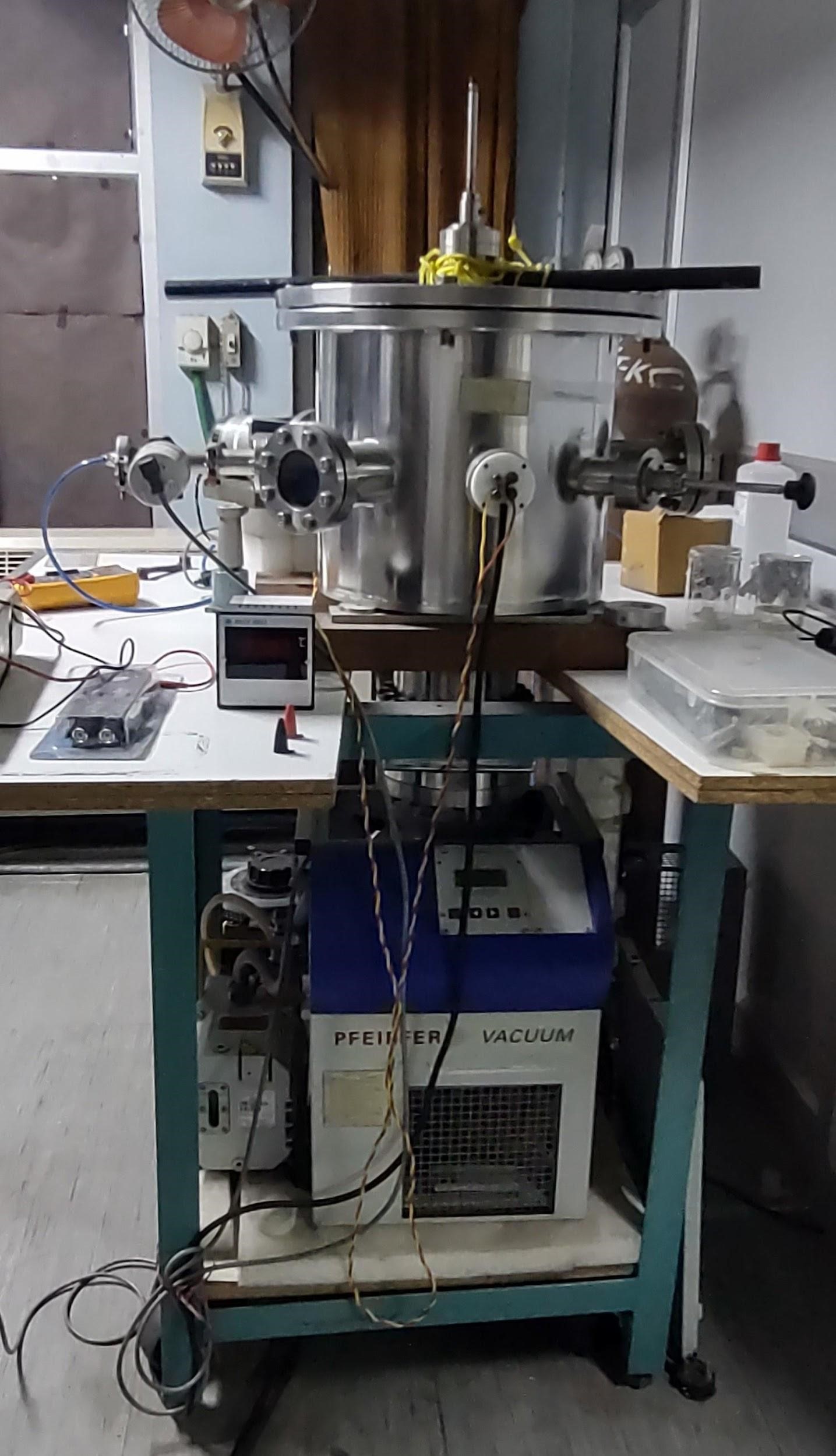
News & Announcement
- Candidates Shortlisted for Interview in PhD Programme New
- Candidates Shortlisted for Interview in M.S ( by Research) Programme New
- Central Manufacturing Technology Institute(CMTI), Bangalore and IIT Kanpur signed a MoU on the 4th July 2022 to undertake collaborative research in Laser Technology, Photonics and Advanced Manufacturing Technology.
- The center welcomes the participation of post-doctoral fellows in research activities.
- Prof Shilpi Gupta has been awarded with P.K Kelkar Fellowship from the Institute.
- Prof Pratik Sen has been awarded with Poonam and Prabhu Goel Chair Professorship.
Upcoming Events



